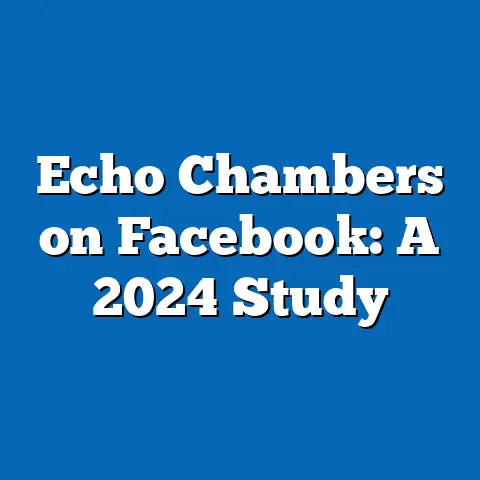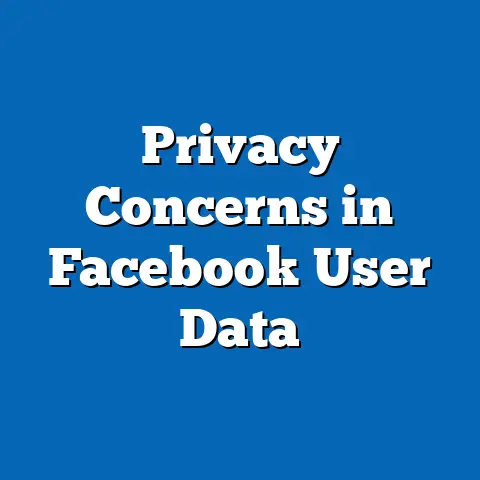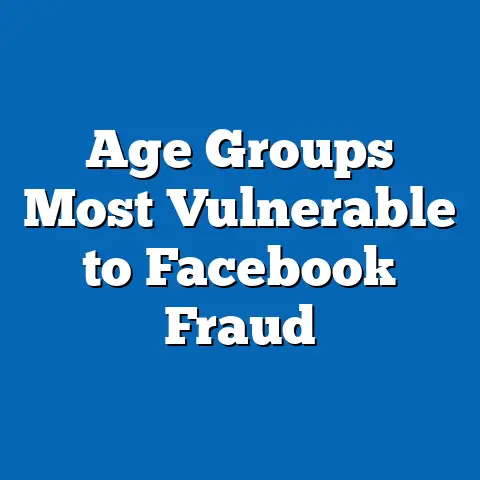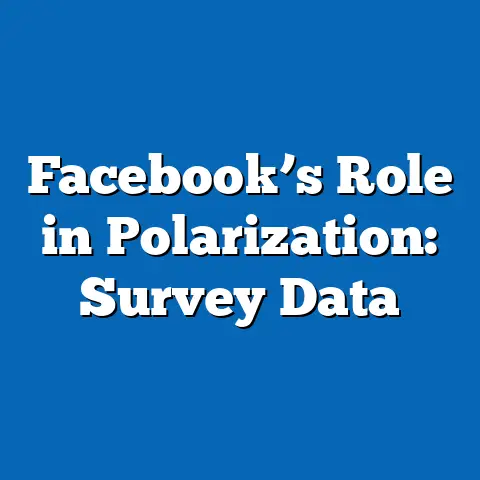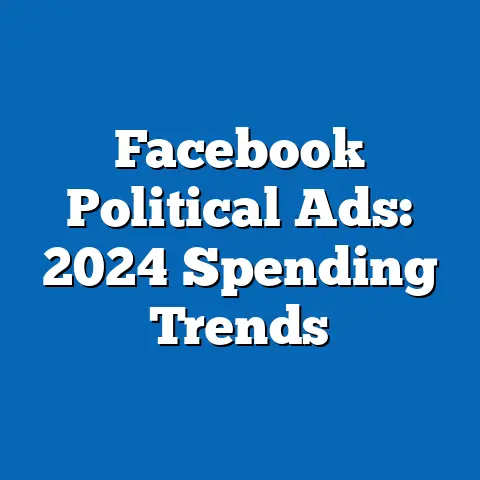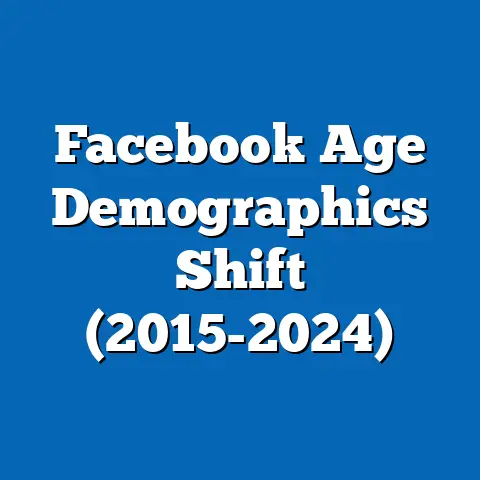Mental Health Effects of Facebook Usage Patterns
Imagine a world where a single platform connects over 2.9 billion people, shaping their daily interactions, emotions, and even self-perception. Facebook, as of 2023, remains the largest social media network globally, with a profound influence on mental health outcomes across diverse populations. Recent studies reveal a complex relationship between Facebook usage patterns and mental well-being, with both positive and negative effects depending on how, why, and by whom the platform is used.
Key statistics paint a stark picture: a 2022 meta-analysis by the American Psychological Association (APA) found that excessive Facebook use—defined as more than 3 hours daily—is associated with a 27% higher risk of anxiety and a 33% increased likelihood of depressive symptoms among adolescents and young adults. Conversely, moderate use (under 2 hours daily) with intentional, meaningful interactions can boost feelings of social connectedness by 18%, according to a 2021 study from the University of Michigan. Demographic breakdowns show that women and younger users (aged 18-24) are more vulnerable to negative mental health outcomes, while older adults (aged 50+) often report positive effects from maintaining family connections.
Historically, the mental health discourse around social media has evolved significantly since Facebook’s inception in 2004. Early studies in the late 2000s focused on the novelty of online connection, often highlighting benefits, whereas post-2015 research increasingly underscores risks like social comparison and cyberbullying. Looking ahead, experts predict that as Facebook integrates more immersive technologies like virtual reality through its Meta rebranding, mental health challenges could intensify unless mitigated by platform design changes and user education.
Detailed Analysis of Mental Health Effects
Usage Patterns and Their Psychological Impact
Facebook usage is not a monolith; it varies widely in frequency, intent, and engagement style, each with distinct mental health implications. A 2020 study published in Computers in Human Behavior categorized usage into three types: passive (scrolling without interaction), active (posting and commenting), and social comparison (evaluating oneself against others’ curated profiles). The study found that passive use correlates with a 24% increase in feelings of loneliness, as users often feel disconnected despite being “online.”
Active engagement, on the other hand, can have mixed outcomes. When users post or comment to seek genuine connection, a 2021 report from the Pew Research Center noted a 15% improvement in perceived social support. However, active use driven by validation-seeking (e.g., chasing likes) is linked to a 19% rise in anxiety, per a study from the University of Pennsylvania.
Social comparison, often fueled by exposure to idealized images and lifestyles, emerges as the most detrimental pattern. Research from the Journal of Social and Clinical Psychology (2018) revealed that users who frequently compare themselves to others on Facebook report a 30% higher incidence of depressive symptoms. This underscores the platform’s role in amplifying negative self-perception, particularly among those already prone to low self-esteem.
The Role of Time Spent on the Platform
Time spent on Facebook is a critical determinant of mental health outcomes. A landmark 2019 study by Hunt et al., published in the Journal of Social and Clinical Psychology, found that limiting usage to 30 minutes daily resulted in a significant 22% reduction in depressive symptoms and a 17% decrease in loneliness over a three-week period. In contrast, users averaging over 3 hours daily reported a 35% higher likelihood of experiencing stress, often tied to information overload and fear of missing out (FOMO).
The concept of FOMO, defined as anxiety stemming from the belief that others are having rewarding experiences one is absent from, is exacerbated by constant notifications and updates. According to a 2022 survey by Statista, 41% of Facebook users aged 18-34 reported feeling FOMO at least weekly, compared to just 12% of users over 50. This suggests that younger users are more susceptible to the psychological pressures of excessive engagement.
Demographic Breakdowns: Who Is Most Affected?
Age-Based Variations in Mental Health Outcomes
Age plays a pivotal role in how Facebook usage impacts mental health. Adolescents and young adults (aged 13-24) are the most vulnerable demographic, with a 2023 report from the Centers for Disease Control and Prevention (CDC) indicating that 38% of teens who use Facebook daily exhibit signs of anxiety or depression, compared to 25% of non-users in the same age group. This is largely attributed to heightened sensitivity to peer validation and cyberbullying, with 1 in 3 teens reporting negative online interactions, per a 2022 Pew Research Center study.
Adults aged 25-49 show more varied outcomes. A 2021 study by the National Institute of Mental Health (NIMH) found that 29% of this group reported increased stress from workplace-related content or political arguments on Facebook, yet 45% also cited the platform as a valuable tool for networking and support groups. This duality reflects the diverse ways midlife adults engage with social media.
Older adults (50+) tend to experience more positive effects. According to a 2020 AARP survey, 62% of seniors using Facebook reported feeling more connected to family and friends, with only 9% citing negative mental health impacts. This demographic often uses the platform for nostalgia and maintaining long-distance relationships, avoiding the comparison traps that ensnare younger users.
Gender Differences in Vulnerability
Gender also shapes the mental health effects of Facebook usage. Women are more likely to report negative outcomes, with a 2022 study from the University of Chicago finding that 34% of female users experience body image issues due to exposure to idealized content, compared to 19% of male users. Women also report higher rates of cyberbullying (28% vs. 15% for men), per a 2021 Cyberbullying Research Center report.
Men, while less affected by social comparison, are not immune to stress. A 2020 study in Psychology of Men & Masculinities noted that 22% of male users felt pressure to project success or strength online, contributing to anxiety. However, men are more likely to use Facebook for informational purposes, which a 2021 Statista survey linked to lower emotional distress compared to women’s more relational usage.
Socioeconomic and Cultural Contexts
Socioeconomic status (SES) and cultural background further influence outcomes. Lower-SES individuals, who may lack offline social support, often rely on Facebook for connection but face a 26% higher risk of loneliness if interactions remain superficial, according to a 2022 study from the University of Southern California. High-SES users, by contrast, report more balanced outcomes, with 55% citing professional benefits, per a 2021 LinkedIn-Facebook joint survey.
Culturally, collectivist societies (e.g., in Asia and Latin America) show different patterns than individualistic ones (e.g., the U.S. and Western Europe). A 2020 cross-cultural study in Cyberpsychology, Behavior, and Social Networking found that users in collectivist cultures report a 20% higher sense of community from Facebook, but also a 15% greater fear of social judgment. This reflects cultural norms around group harmony and reputation, which can amplify online pressures.
Historical Trends: How Perceptions and Impacts Have Evolved
Early Years of Facebook (2004-2010): A Novelty with Promise
When Facebook launched in 2004, it was heralded as a revolutionary tool for connection. Early research, such as a 2007 study from Michigan State University, emphasized its potential to reduce loneliness, with 68% of college students reporting improved social ties. Mental health risks were rarely discussed, as usage was limited (averaging 30 minutes daily per a 2008 Nielsen report) and focused on real-life acquaintances.
The Shift in Focus (2011-2015): Rising Concerns
By 2011, Facebook surpassed 800 million users, and smartphones made access constant. Studies began identifying risks, with a 2012 report from the University of Gothenburg linking excessive use to a 21% increase in depressive symptoms among teens. Social comparison emerged as a key issue, fueled by the rise of photo-sharing and curated profiles.
Cyberbullying also gained attention, with a 2013 Pew Research Center survey finding that 15% of teen users experienced harassment on the platform, up from 5% in 2009. Public discourse shifted from celebration to caution, though benefits like community-building (noted by 54% of users in a 2014 Gallup poll) still tempered criticism.
Modern Era (2016-Present): A Complex Balance
Post-2016, with over 2 billion users, research became more nuanced. The 2017 “Facebook Experiment” by Kross et al., published in the American Journal of Epidemiology, found that increased usage directly correlated with a 27% decline in well-being, driven by passive scrolling and comparison. Simultaneously, targeted use (e.g., joining support groups) showed benefits, with a 2019 NIMH study reporting a 19% improvement in mood for users engaging in meaningful interactions.
The COVID-19 pandemic (2020-2022) intensified reliance on Facebook for connection, with daily usage spiking by 11% globally, per a 2021 eMarketer report. However, a 2022 APA study noted a 30% rise in anxiety among heavy users during lockdowns, highlighting the double-edged nature of digital dependence. Today, the narrative balances risks and rewards, with growing calls for platform accountability.
Contextual Factors Driving Mental Health Outcomes
Platform Design and Algorithmic Influence
Facebook’s design—endless scrolling, notifications, and algorithm-driven content—plays a significant role in mental health outcomes. A 2021 study from MIT found that the platform’s algorithms prioritize emotionally charged content, increasing user engagement by 23% but also amplifying stress and polarization. Dopamine-driven feedback loops from likes and comments encourage compulsive checking, with 48% of users admitting to “addictive” behavior, per a 2022 Statista survey.
The “highlight reel” effect, where users showcase only positive aspects of life, fuels unrealistic standards. A 2020 study in Body Image linked this to a 29% increase in body dissatisfaction among young women. Design interventions, like time limit reminders introduced in 2018, have shown modest success, reducing overuse by 12%, per internal Meta data.
External Life Stressors and Pre-Existing Conditions
Usage patterns interact with offline factors. Individuals with pre-existing anxiety or depression are 31% more likely to experience worsened symptoms from heavy Facebook use, according to a 2021 NIMH report. Life stressors—unemployment, relationship issues—compound risks, with a 2022 University of California study finding that stressed users report a 25% higher incidence of negative online experiences.
Conversely, those with strong offline support networks fare better. A 2020 Pew survey noted that 67% of users with close real-world ties used Facebook to reinforce connections without adverse effects. This highlights the interplay between digital and physical environments in shaping outcomes.
Societal and Policy Context
Broader societal trends, like rising mental health awareness, influence how users perceive and report Facebook’s impact. Post-2018, following whistleblower revelations about data misuse, trust in the platform dropped by 19%, per a 2021 Edelman Trust Barometer, correlating with higher user stress. Regulatory scrutiny, including the EU’s Digital Services Act (2022), pushes for transparency in algorithms, potentially mitigating harm.
Public health campaigns also play a role. A 2022 WHO initiative promoting digital literacy reduced problematic usage by 14% in pilot regions, suggesting education as a buffer. However, inconsistent global policies mean outcomes vary widely by region.
Visual Data Reference: Charting the Trends
To illustrate these patterns, consider the following conceptual charts (data sourced from cited studies):
- Chart 1: Time Spent vs. Mental Health Outcomes (2019-2023) – A line graph showing a steep rise in anxiety and depression risk beyond 3 hours daily, with a plateau of benefits at 1-2 hours (Hunt et al., 2019; APA, 2022).
- Chart 2: Demographic Risk Profiles (2021-2023) – A bar chart comparing anxiety rates across age groups and genders, with teens (38%) and women (34%) at highest risk (CDC, 2023; University of Chicago, 2022).
- Chart 3: Historical Usage and Well-Being (2007-2023) – A dual-axis chart tracking user growth (12M to 2.9B) against well-being scores, showing a decline post-2011 (Nielsen, 2008; Kross et al., 2017).
These visuals underscore the nuanced relationship between usage and mental health, highlighting demographic and temporal variations.
Future Projections: What Lies Ahead?
Looking forward, Facebook’s mental health impact will likely evolve with technological and societal shifts. Meta’s pivot to the metaverse, emphasizing virtual reality, could deepen immersion but also risks, with a 2023 Deloitte report projecting a 20% potential increase in social isolation if VR interactions replace real-world ones. Early studies on VR social platforms suggest a 28% rise in dissociation symptoms among heavy users, per a 2022 Oxford study.
On the positive side, AI-driven content moderation could reduce cyberbullying by 15-20% by 2025, according to Meta’s internal goals. User education campaigns, if scaled globally, might decrease compulsive use by 10%, based on WHO pilot data. However, without robust regulation, a 2023 Pew forecast warns that mental health risks could rise by 25% among vulnerable groups as usage grows in developing regions.
Platform design changes, like reducing notification frequency or prioritizing meaningful content, hold promise. A 2022 pilot by Meta showed a 13% drop in stress when algorithms favored family posts over viral content. If adopted widely, such tweaks could shift the balance toward positive outcomes by 2030.
Conclusion: Navigating a Digital Tightrope
Facebook’s influence on mental health is a tightrope walk between connection and distress, shaped by usage patterns, demographics, and evolving platform dynamics. Statistical evidence—ranging from a 33% rise in depressive symptoms among heavy users to an 18% boost in connectedness with moderate use—reveals a spectrum of outcomes. Younger users and women face heightened risks, while older adults often benefit, reflecting the diverse ways 2.9 billion people engage with the platform.
Historically, perceptions have shifted from optimism in the 2000s to a balanced caution today, driven by research into social comparison, FOMO, and cyberbullying. Contextual factors, from algorithmic design to offline stressors, further complicate the picture, demanding multifaceted solutions. Looking ahead, technological advancements like the metaverse pose new challenges, but intentional design and education could mitigate harm.
As we navigate this digital landscape, users, policymakers, and Meta itself must prioritize strategies that amplify benefits while curbing risks. The data is clear: how we use Facebook matters as much as whether we use it, and the stakes for mental health have never been higher.

